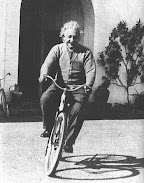Introduction:
When you write an LCD Program to write your name or any text, you can only display the same text at all times. If you have to change the text, you have to change the code, recompile it again and then reprogram it. Instead of doing all this, you can just connect your circuit to serial port of computer and change the text on LCD instantly using the hyperterminal of the PC. You can just type any text in the hyperterminal and press ENTER key. The text will be displayed on the LCD instantly. You can customize the display by changing the pattern.
Search Box

Custom Search
Search Result Place
Introduction:Many times, I have written code for UART communication and when it came to testing, my laptop does not have a serial port. I bought a USB to serial port converter but it didnt worked. I felt frustated and finally thought of buying a Serial to Com port module in an electronics hobby store. After seeing that I got the idea of making one myself. I have 2 USB AVR Programmers with me. I tried different circuits but they didnt worked for Windows 7 because of driver problems. I googled for the circuit and finally came to know that the circuit of USB Programmer and USB to Serial port are both same. I just have to connect some wires in the programmer and change the firm ware of the programmer and it became USB to Serial Converter! Voila! My laptop has a serial port now!
There are other methods in internet, but you can only them in old PC's of with Windows 98 or XP. You will find support for high end operating systems like Windows 7. This circuit is tested and it is working 100%. I started using COM port for all my projects because you can give different inputs and debugging became even more simple using serial port.
Category:
AVR Projects
6
comments
Hi everyone! First of all I would like to thank Avinash Gupta for writing all the valuable tutorials and libraries for AVR Microcontrollers and helping people like me to build projects and learn new things. I am dedicating this post to him!
 For Excellent AVR Tutorials click here.
For Excellent AVR Tutorials click here.Introduction:Using remote keys from 1 to 4, you can control 4 appliances. You can easily extend this number to as many you wish. For example, if you press key_1 on your remote, fan will turn ON. If you press the same key again, fan will turn OFF i.e each time you press a key configured for an appliance, the condition will toggle. I have programmed the MCU such that all devices will turn OFF on pressing power button(RED COLOR on top of your remote). You can also choose combinations like turning all fans OFF at a time, etc. With little tweaking, you can change the program yourself! The status of the appliances is shown in an LCD. You can ignore this feature if you dont want LCD. I used LCD for developing the code.
I main advantage in this project is that the appliance status is stored here using internal ATmega8 EEPROM. So, whenever mains power goes off and comes again, the appliance will be in the same state in which it is before. Suppose if power goes off during night. The fan will be off. When power is back, the fan will be automatically turned on again. You dont have to search for remote again!
I main advantage in this project is that the appliance status is stored here using internal ATmega8 EEPROM. So, whenever mains power goes off and comes again, the appliance will be in the same state in which it is before. Suppose if power goes off during night. The fan will be off. When power is back, the fan will be automatically turned on again. You dont have to search for remote again!
Category:
AVR Projects,
Home Appliance Control
30
comments
Programmer and Development Board from Extremeelectronics:
Look at the below picture. The programmer I am using is bought from another manufacturer, not from extremeelectronics. It is an USB Porgrammer. You can get it from any leading electronics hobby electronics store. My programmer is not pin compatible with XboardMini which I brought from extremeelectronics. I modified the ISP connector for connecting the USB programmer with the board. The XboardMini does not has Vcc connection in its ISP connector. My programmer has Vcc connection in its ISP connection. 10th pin is free (not connected) in the Xboardmini ISP circuit. I modified my cable such that 9th pin gets Vcc from USB programmer.
The red wire I connected goes from 10th pin to one of its Vcc node. In this way, the board directly gets Vcc from USB power supply. You dont have to use 9V adaptor for programming and powering the board.
I dont know whether the usb programmer from extremeelectronics is having Vcc connection in its ISP Port. Just find an empty pin in the ISP connector in programmer and Development board. Connect that pin to Vcc of the USB port. Just do the same thing in the development board also. Connect the Vcc pin of ISP port to Vcc rail in the board. using this setup, I am able to carry the development board and programmer in my laptop. I dont have to carry a 9v adaptor as finding power sources is not so easy for me as I am always in move. I am happy with my Acer Mini as I am getting a backup of 7hrs! Thanks to Intel for creating such low power processors!
Category:
AVR Projects
2
comments
Subscribe to:
Posts (Atom)






